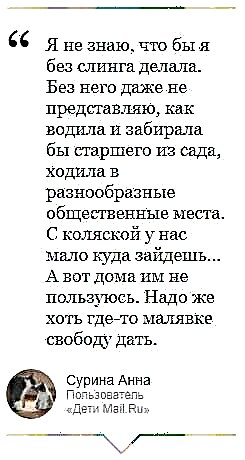
For many newcomers to painting, the choice of a brush turns out to be a very primitive result in terms of shape and size. It is important to know here that synthetics, for example, are not suitable for watercolors and are of little use for gouache, and are more often used for working with acrylic paints, but in fact there are many more criteria for choosing a synthetic brush.


General Provisions
Before choosing a brush for performing certain narrow tasks, it is worth learning to understand such tools in general. It is unlikely that anyone wants his purchase to serve him only a couple of weeks, therefore, first of all, one should attend to the choice of a high-quality copy.
Even external parameters should not be ignored. You can start your search for the best tool by determining whether a particular brush fits the length of the handle or not. If the tool is not convenient already according to this criterion, then all the others can not even be considered. If the length is satisfactory, you should pay attention to the smoothness of the handle (required), as well as evaluate the degree of reliability of the materials used.


It is very important to notice the type of base - the metal part that connects the handle and the pile. It is logical that with an unreliable base, the pile will quickly crumble, therefore preference should always be given to those brushes for painting that are equipped with a solid base - without a seam.
The quality of the pile should be discussed separately. First of all, it is unacceptable to purchase a tool in which the glue holding the pile hairs is visible from the outside, otherwise it is better not to wash the tool at all, which, of course, is impossible. In addition, the pile must be elastic in order to perfectly accurately convey the movements of the master's hand in the drawing. In a store, it is unlikely that it will be possible to check this, but in a good specimen, the pile should also not lose shape when wet, and also keep as long as possible without falling out during operation.
Pile shape
Another important consideration when choosing art brushes is the shape of the pile. It is on her that the convenience of drawing certain details depends, while people who are familiar with drawing only at the level of a general education school would wonder for a long time how it is possible to draw so many elements of different shapes and sizes with one standard brush. Most often, there are several common types of brushes.
- Round pile shape - the most common, it is with it that those who do not know how to choose an artistic tool usually draw. In principle, with a relatively small size, it is convenient both for drawing details and for painting areas, but in both cases it is better to give preference to narrow-profile solutions.


- Flat brushes are also quite common. Their pile has a flattened shape, due to which such a brush is very similar to a painting brush. This similarity is no coincidence, because both tools are designed for the same purpose - the fastest and most convenient painting of large areas. Typically, the end of such a brush is slightly pointed and shaped like a cat's tongue, which allows you to more accurately adjust the thickness of the stroke depending on the pressure.
- Fleitz - this is a kind of analogue of a flat brush, only with the end of the pile in the form of a straight line. You can't adjust the thickness of the stroke here, but if you need its maximum width, this brush will be perfect.
- When looking at type brush it seems that the manufacturer regretted the pile on it, but in fact, here a small amount of hairs is needed with their considerable length. Such a tool is no longer needed for drawing, but for calligraphy, because they can easily put even a small point, not to mention drawing the finest lines.

- Linear instances resemble the previous brush, but their pile is slightly larger and noticeably shorter. Professional artists usually write out small details with this tool, because due to the shortening of the hairs, the highest degree of control over the shape of the drawing is achieved.


- Fan brushes very much resemble their flat counterparts, however, they have, as is clear from the name, a pronounced fan shape. This solution allows you to play with the transitions of shades as subtly as possible, as well as create clear color contrasts.


As a rule, each artist has his own preferences regarding his favorite subjects, but even an amateur will not have enough one brush. For this reason, it is worth purchasing a set consisting of tools of different shapes in order to be able to draw the finest outlines and quickly paint over half of the sheet with one shade.
Numbering
It is not uncommon to find a classification of artistic brushes by numbers, which can puzzle an uninformed person. In fact, there is nothing complicated about this - as a rule, the number means the diameter of the pile of a round brush or its width in the case of any other shape. Thus, brush # 1 is a round brush with a bristle diameter of 1 mm. This diameter is measured at the point where the pile is covered by the plinth.
It should be noted that flat brushes are usually only paired numbers, since the compression of the cap usually doubles the width of the pile... Nevertheless, there is no need to talk about the high accuracy of measurements on such a scale; therefore, the actual pile size often does not correspond to the indicated number. Moreover, with the same number, but different manufacturers and pile material, the result obtained thanks to supposedly identical brushes can vary greatly.

Any artist needs a variety of brush sizes, from the smallest, including # 0, to the largest, # 16 or # 20. You shouldn't be surprised at the number zero - such a brush simply consists of just a few hairs and is designed to draw out the finest lines. Diversity not only in shape, but also in size makes artists acquire fairly large sets of artistic tools, consisting of at least 5-6 pieces.


Manufacturers
The choice of an art brush is largely subjective, since each creator has different needs. It may be that an artist, even among Chinese products, will find a tool that will satisfy him with its characteristics and quality. However, this is possible only in the case of a conscious choice, but if a beginner chooses, then first he should get an idea of what the highest quality should look like.
Products from brands such as Erich Krause, Artberry or Pinax Creative will be able to correctly form the idea of a worthy choice.


For information on how to choose the right brushes for painting, see the next video.



